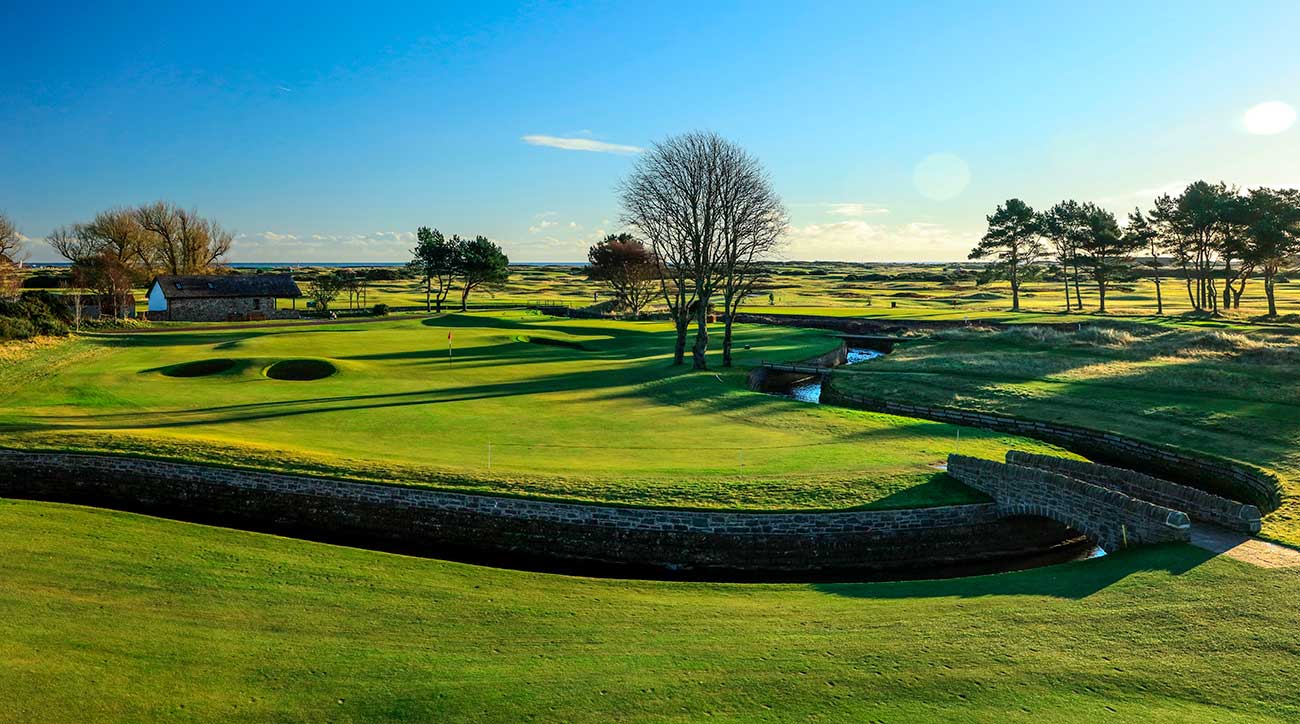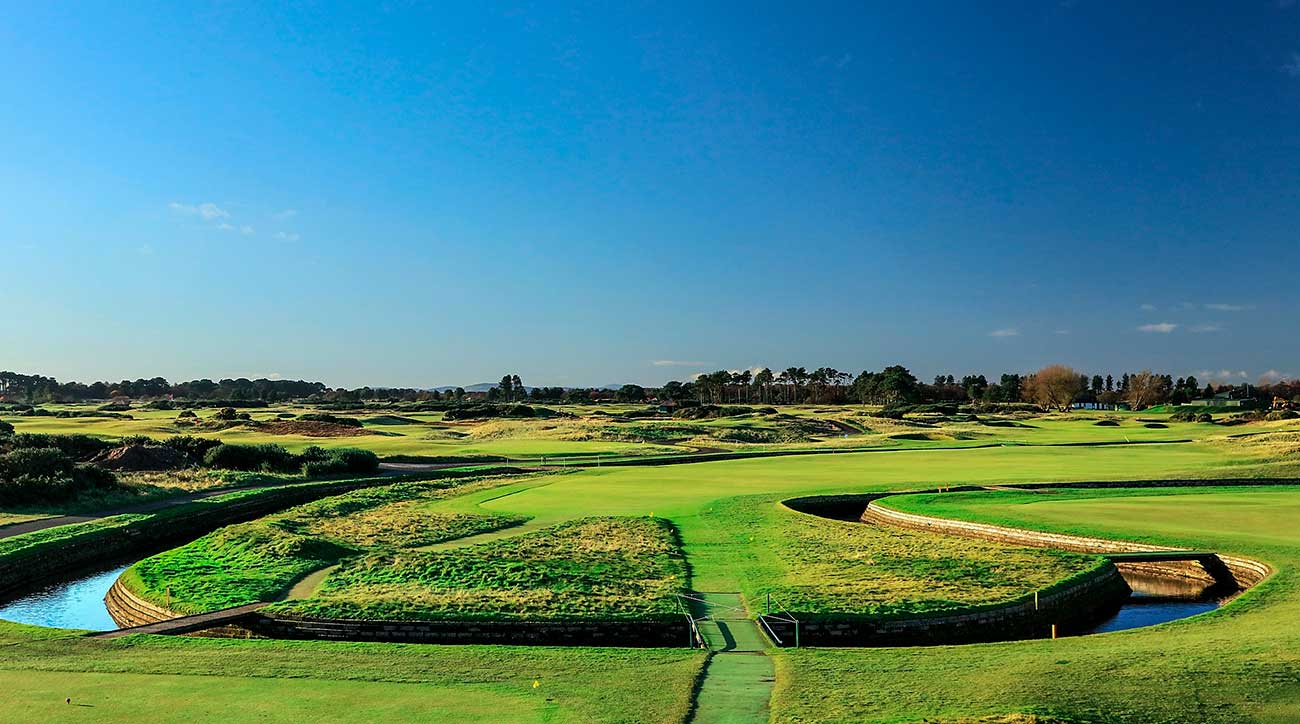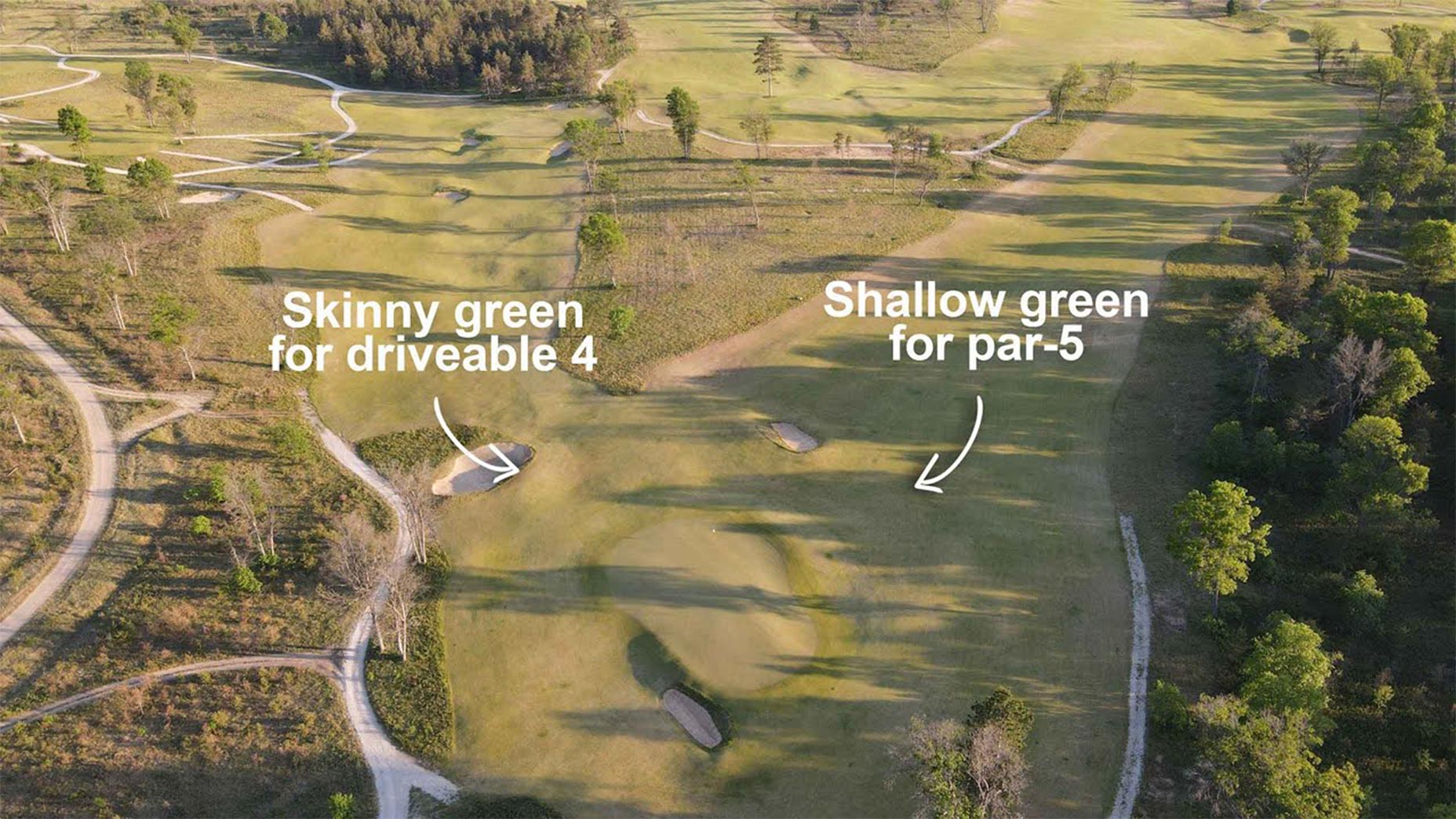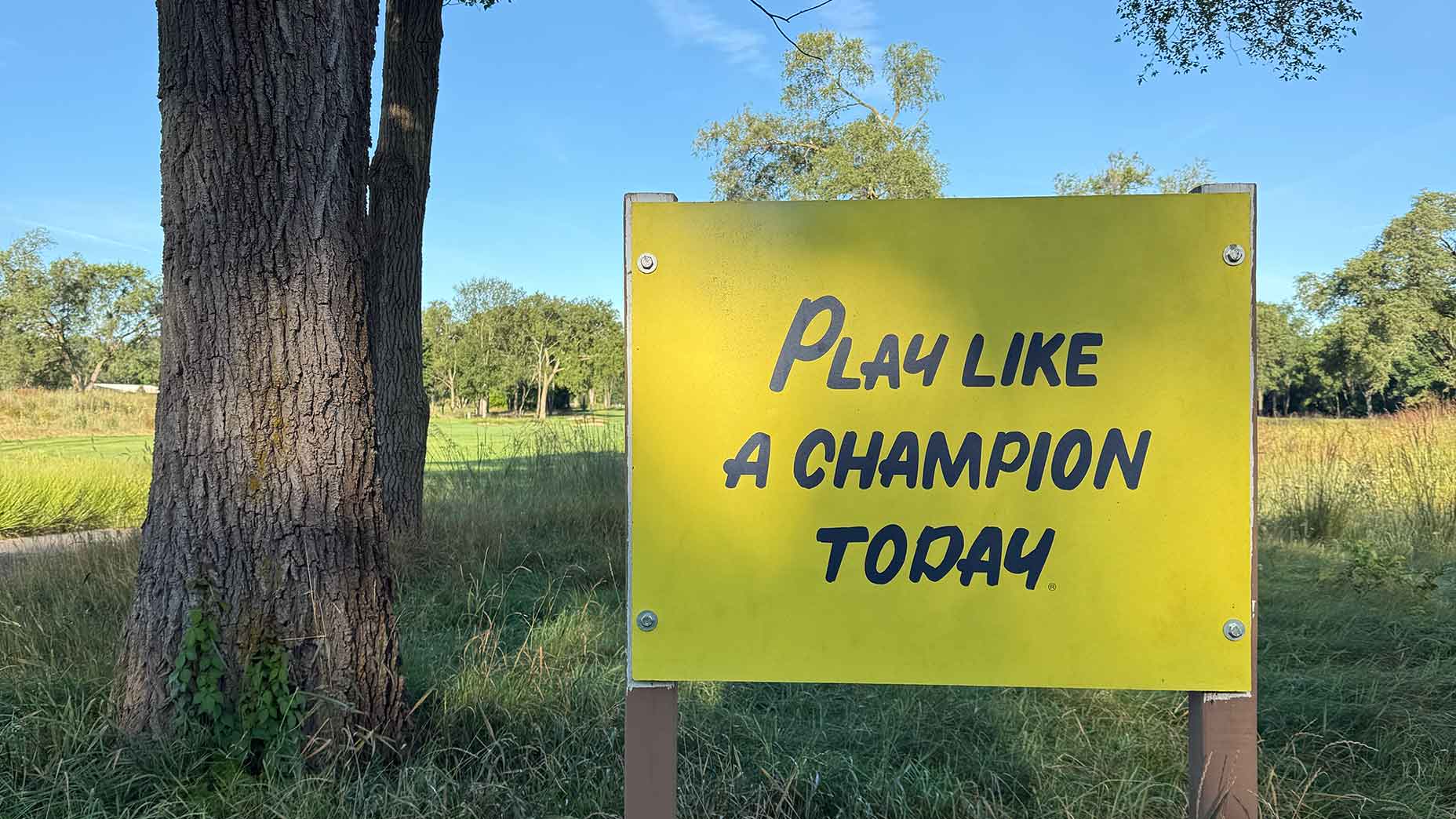Dubbed “Car-nasty” during the ’99 British Open, when skinny fairways and jungle-like rough produced a prehistoric-sounding winning score of 290 (+6), Carnoustie has long been considered Scotland’s toughest test. However, it’s a brute with character. Dating in part to 1842, the course is stern rather than stunning in appearance, offering only glimpses of the adjacent North Sea. Still, it’s the reliably ferocious sea breezes, together with merciless bunkers, heather, gorse and the menacing, meandering Barry Burn that make Carnoustie the ultimate challenge on the Open rota. While the course has no weak links in winds of any kind, these four holes will prove pivotal.
No. 6 / “Hogan’s Alley”
580 yards, par 5
The Challenge: The only par 5 on Carnoustie’s front nine unfolds over flattish terrain and is defined by two bunkers in the middle of the fairway and an OB fence that runs along the hole’s left edge. Only 20 yards separates the first fairway bunker from the fence, but if you can find that slender alley, your angle into the green improves. A drainage ditch called Jockie’s Burn cuts into the fairway from the right side, 80 yards from the two-tier putting surface. An unusual east wind, more common in March and April, makes the hole reachable by most of the field. The prevailing wind is into your face, bringing all the hazards and angles into play.
The Critical Shot: If into the prevailing wind, a precise 220-yard rescue or 3-iron tee shot short of the bunkers.
The History Lesson: Ben Hogan cemented his reputation as the “Wee Ice Mon,” as the Scots called him, by directing his drive into this narrow gap during all four rounds of the 1953 British Open, en route to winning the event in his only appearance.

No. 10 / “South America”
465 yards, par 4
The Challenge: Four bunkers to the right and a single trap to the left bracket the fairway, while the green is protected by twin pot bunkers front-left and by trees and a bunker to the right. Lurking ominously is the Barry Burn, which bisects the fairway 45 yards from the green, then curls up the right side as it approaches the putting surface. In July, the hole is downwind, so look for short irons in, but if the wind switches or a player drives it into the rough, the 10th becomes a rugged, risk/reward test.
The Critical Shot: Power fade drive to the middle-right half of the fairway.
The History Lesson: According to local lore, the hole earned its name when a caddie (another version says it was a member) announced he was emigrating. He got so smashed at his going-away fete that he made it only as far as No. 10 before passing out and ending his quest.

No. 14 / “Spectacles”
513 yards, par 5
The Challenge: Jabbed into the face of a sandhill some 50 to 65 yards from the green are the “Spectacles,” the round, menacing, side-by-side bunkers that give the hole its name. Prior to this encounter is a daunting tee shot, where the amply wide landing area is obscured by a mass of heather and gorse. Typically, the breeze is over your right shoulder, effectively converting this into a par 4. Find the fairway and it’s a 4- or 5-iron into the largest green on the course. But if the wind is over your left shoulder, the decision to take on a carry over the Spectacles is momentous. Lay up, and your third is totally blind.
The Critical Shot: Soft draw off the tee with a fairway metal or hybrid.
The History Lesson: Gary Player and Tom Watson both made eagle 3s here on their way to victories in 1968 and 1975, respectively. Player’s came via a 3-wood second shot over the Spectacles that finished nine inches from the cup in the fourth round, Watson’s via a chip-in in his 18-hole playoff with Jack Newton.

No. 17 / “Island”
460 yards, par 4
The Challenge: The hardest hole at Carnoustie is nasty whether the conditions are calm or calamitous. Its name comes from the sanctuary of fairway where most drives land, which is surrounded by a loop of the Barry Burn that curves like a Formula 1 racetrack, first cutting in front of the tee, then darting across the fairway from left to right. From 240 to 290 yards off the tee, the fairway progressively narrows, making a layup the prudent play but leaving a frighteningly long approach. Complicating matters is that the prevailing North Sea wind is directly into the player.
The Critical Shot: Controlled fade tee shot aimed at the first Barry Burn bridge.
The History Lesson: In the 1996 Scottish Open at Carnoustie, Tiger Woods played the hole with 4-iron/4-iron on a downwind day. The following day, he needed two drivers to reach the front of the green.






